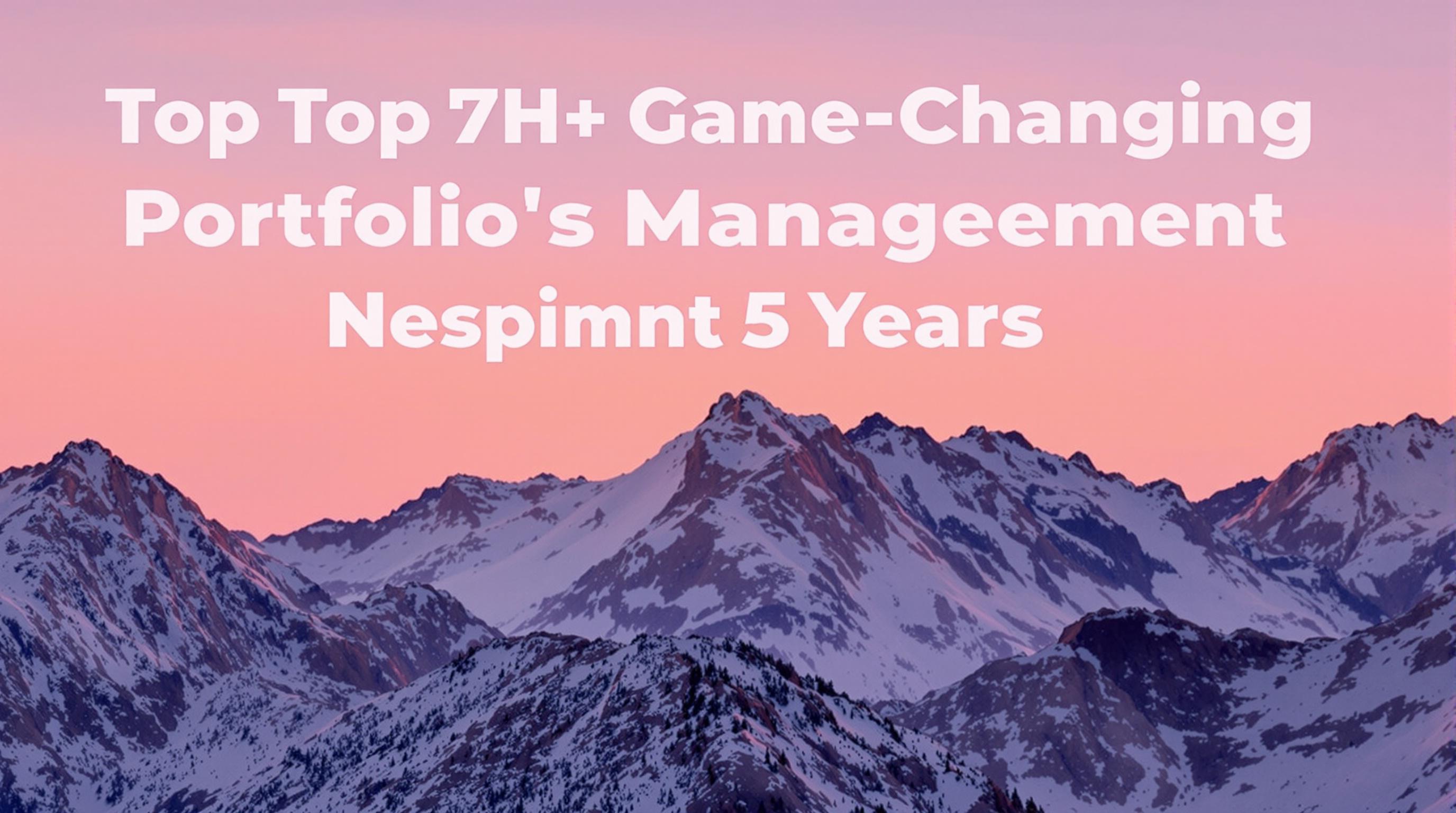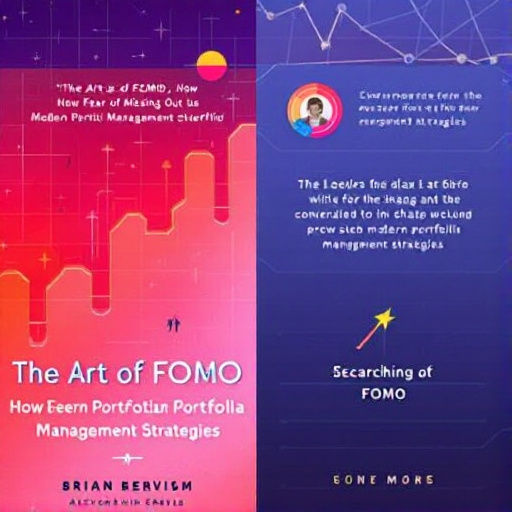Featured Articles
- “Beneath the Surface: How Behavioral Finance Secrets Can Transform Your Portfolio Management Strategy”
- "Blind Spots in Portfolio Management: Unveiling the Impact of Psychological Bias on Investment Decisions"
- Navigating the Dark Side: The Ethics of AI in Portfolio Management and Its Impact on Investment Strategies
- "Reimagining Portfolio Management: How Gamification Could Transform Investment Strategies for the Next Generation"
- The Art of FOMO: How Fear of Missing Out Shapes Modern Portfolio Management Strategies
The Art of FOMO: How Fear of Missing Out Shapes Modern Portfolio Management Strategies
The Art of FOMO: How Fear of Missing Out Shapes Modern Portfolio Management Strategies
The Fear of Missing Out (FOMO) isn't just a millennial phenomenon; it's a driving force behind modern portfolio management strategies that can make or break investors. From social media's influence to behavioral economics, understanding FOMO is essential for anyone navigating today's investment landscape.
Understanding FOMO: More Than Just a Buzzword
Have you ever scrolled through your social media feed and felt a pang of envy seeing friends enjoying extravagant vacations or attending exclusive events? That feeling is known as FOMO, and while it may seem trivial in personal life, it's a powerful psychological concept that significantly affects how investors make decisions. According to a survey by Eventbrite, 69% of Millennials feel FOMO, which is not surprising considering the digital age's constant connectivity. However, its effects ripple far beyond social gatherings—it plays a critical role in shaping investment choices.
The Science Behind FOMO
FOMO can be traced back to the psychology of loss aversion. Dr. Daniel Kahneman, a psychologist and Nobel laureate, suggests that people are more motivated to avoid losses than to seek gains. This principle explains why investors may rush to acquire trending stocks or real estate, fearing they might miss out on juicy returns. A 2021 study published in the *Journal of Behavioral Finance* found that investors who experience high levels of FOMO tend to overtrade, increasing transaction costs and potentially diminishing their overall returns.
Case Study: The Rise and Fall of Meme Stocks
Consider the meteoric rise of “meme stocks” like GameStop and AMC Theatres. Fueled by online discussions and a collective fear of missing out, many small investors jumped on the bandwagon seeking quick profits. According to data from Yahoo Finance, GameStop’s stock skyrocketed from around $20 to an all-time high of nearly $500 within weeks in early 2021, illustrating how viral sentiment can cause extreme market fluctuations. However, these investors faced significant losses when the stock inevitably fell back down, revealing the dangers of investing driven by FOMO.
The Role of Social Media in Investment Decisions
Social media platforms have become modern marketplace venues where investment strategies and stock analyses are shared—often with an emotional charge. A study from the *Global Financial Literacy Excellence Center* highlights that nearly 80% of retail investors consult social media before making decisions. This stat can be both beneficial and detrimental; while gaining insights from diverse sources can widen perspectives, it also leads to herd mentality. Investors may find themselves buying into stocks purely based on trending hashtags, compounding the influence of FOMO.
How FOMO Affects Portfolio Diversification
In a well-diversified portfolio, asset classes should ideally include a healthy mix of stocks, bonds, and alternative investments. However, FOMO often leads investors to overlook diversification. Instead of focusing on long-term financial goals, they chase trends, ignoring a balanced strategy in favor of the latest hot stock. This behavior can severely impact risk tolerance and overall financial health.
Strategies to Manage FOMO
Here are several strategies investors can use to mitigate the risk associated with FOMO:
- Set Clear Goals: Establishing solid investment objectives can help you stay focused and less susceptible to impulsive decisions driven by FOMO.
- Diversify: An adequately diversified portfolio can serve as a buffer against major losses, reducing the temptation to jump onto trending assets.
- Limit Social Media Consumption: Cutting back on social media can minimize exposure to sensationalized information, helping you avoid emotional investing.
- Do Your Research: It’s prudent to evaluate potential investments based on data rather than hype, making informed decisions that align with your long-term goals.
The Double-Edged Sword of FOMO and Risk-Reward Ratio
The concept of risk-reward ratio is an essential part of investment, but FOMO often skews this understanding. For many investors, the prospect of high returns eclipses the inherent risks associated with certain assets. For example, during cryptocurrency booms, many novice investors plunge into altcoins without understanding the volatility involved. It’s easy to think, “If I don’t invest now, I’ll miss the boat,” but calculating risk against potential rewards is crucial for successful investing.
A Humoristic Perspective on FOMO
Picture this: Grandma at a bingo night. She’s on a roll, winning almost every game, but suddenly, she hears about the ‘high-stakes poker’ happening at the other table, with the stakes at $50 a hand. Cue the FOMO! In a mad rush, she leaves her bingo cards behind, thinking, “What if I miss out on my fortune tonight?” Spoiler alert: Poker isn’t her specialty, and soon after, she’s out $100, while her bingo pals are still rolling in the winnings. Laughter aside, this amusing scenario illustrates how pushing towards perceived greatness can lead to regret — something investors must bear in mind too!
Insights from Real-World Investors
Examining the stories of seasoned investors can yield valuable lessons regarding FOMO. Take Warren Buffett, the Oracle of Omaha, who often cautions against fear-driven decisions. He once stated, “Be fearful when others are greedy, and greedy when others are fearful.” This advice underscores how resisting the urge to fall prey to FOMO can lead to significant gains in the long run.
Reflecting on Personal Experiences
As an 18-year-old new to investing, I once felt the gnawing pressure of FOMO when I saw friends investing in tech stocks that were rising dramatically. Driven by excitement, I impulsively invested without doing my homework. Within weeks, the market corrected, and I learned an impactful lesson: that FOMO can lead to hasty decisions with lasting consequences. This experience shaped my approach, leading me to prioritize research and moderation over emotion.
The Impact of Behavioral Finance on Investing
Behavioral finance examines how emotions and cognitive biases drastically impact investor behavior. FOMO is one such bias, influencing decision-making processes and often skewing rational thought. Understanding behavioral finance can help investors become more aware of their tendencies, reducing knee-jerk reactions and improving overall decision-making.
Conclusion: Embracing Strategy Over Emotion
In an age dominated by rapid information dissemination and social connections, FOMO is an innate challenge investors face daily. However, by understanding the psychological implications of FOMO and implementing sound investment strategies, investors can navigate the markets more effectively. Striking a balance between seizing opportunities and maintaining a disciplined approach is key to long-term success. As you step into the investment arena, remember: while it’s crucial to remain informed, it’s equally important not to let the current buzz dictate your financial future.
In closing, the art of managing FOMO isn’t just about avoiding losses; it's about crafting a strategy that supports your investment goals and financial well-being. So the next time you feel that twinge of FOMO, take a deep breath, evaluate your options, and remember: sometimes, the best move is not to move at all.




